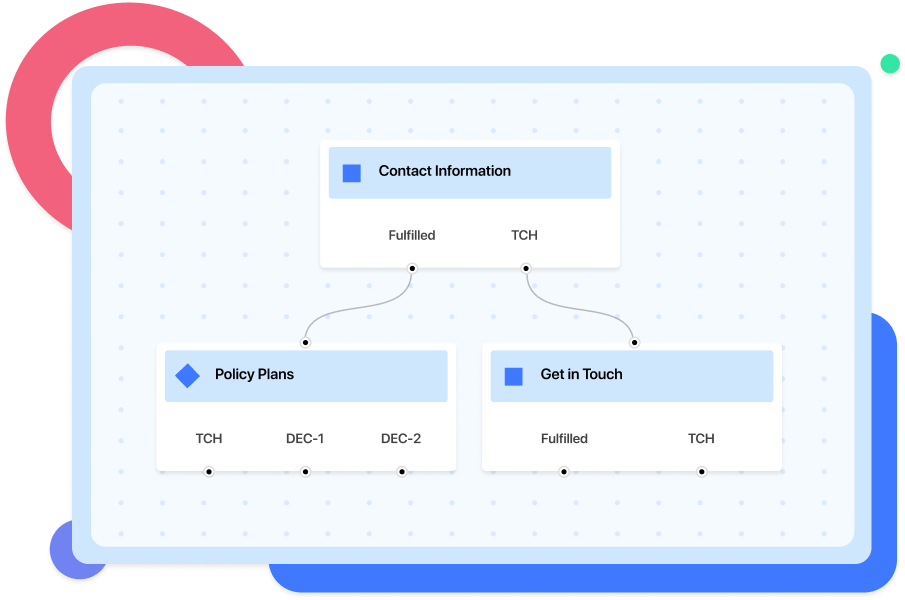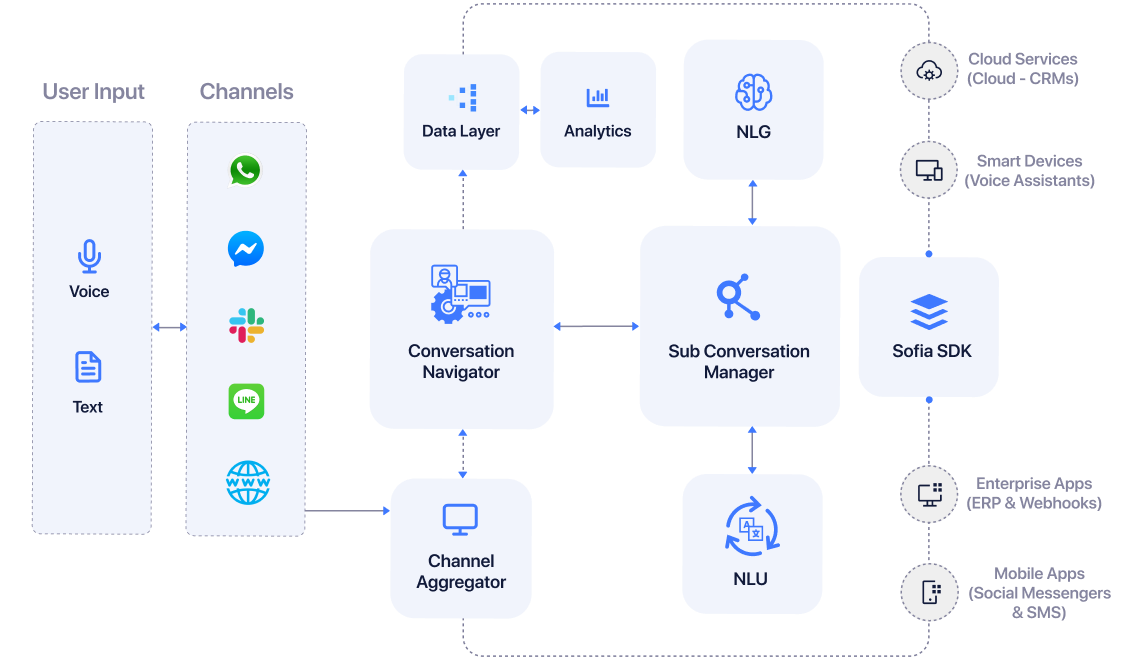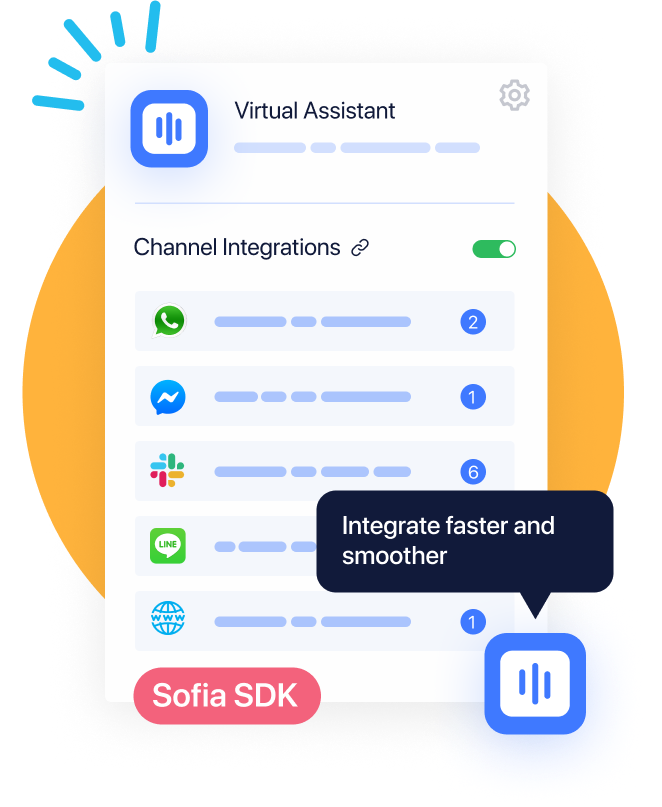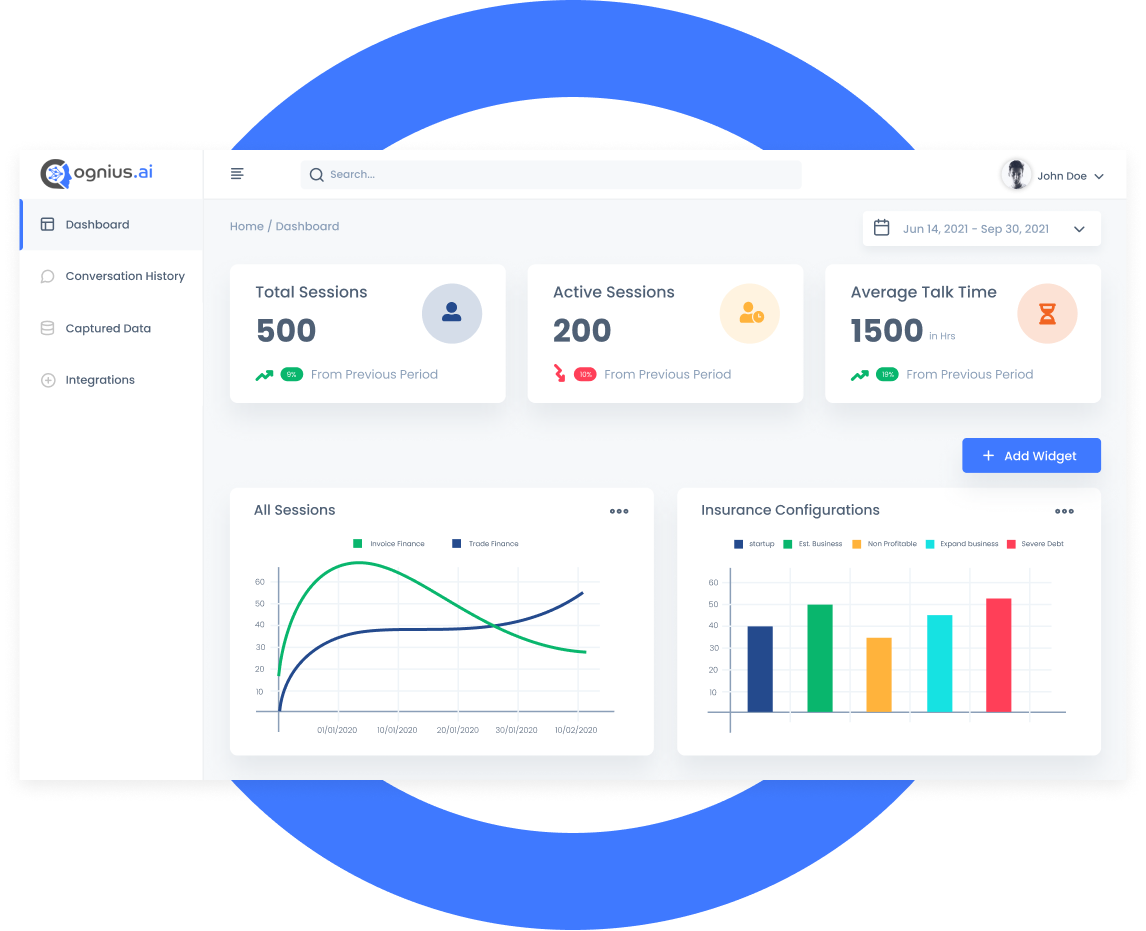See our latest developments Know More

See our latest developments Know More

Sofia Studio is a drag and drop graphical interface to build conversational automations faster. Our unique micro-conversation based approach can represent complex use cases in a much more compact way, compared to other conversational AI platforms.
Our approach also allows you to design non-linear conversational scenarios with lots of twists and turns. Unlike other platforms, you don’t have to pre-plan all the possibilities of a conversation. Sofia’s Deep Learning Platform automates that for you.

You can automate customer interactions at scale through Telephony, Social-Media and Web channels with a few button clicks. Sofia SDK allows you to integrate your custom front end to conversational automations you built using Sofia Studio.
Define interactive quick reply options with Sofia Markup Language (SoML). SoML is cross-compatible across all the channels. Therefore, the right interactive interface is rendered in the right channel through a single SoML snippet implementation.

Sofia voice interface is fine-tuned to recognize voice inputs accurately. It’s different from traditional voice-enabled chatbots, where an STT engine is simply plugged to a text based chatbot. We have done the hard work to make sure that your customer's voice is accurately captured.
You can customize Sofia’s voice with multiple accents and personalities to best suit your use cases. Sofia’s voice engine is optimized to deliver real-time responses.

Webhook based integration is available out of the box in Sofia Studio. You can push data from your automation to any external application such as CRMs, and you can load data into your automation from an easy to configure webhook based approach.
For any custom integration, our SDK is the way to go. SDK can connect your application with deployed conversational automations and Sofia analytics.

Sofia’s analytics is simple, yet powerful. Our analytics engine enables you to populate your custom dashboard with the right information. Sofia platform groups events in a deployed automation into tags. You can also tag events using Sofia Markup Language (SoML).
Add any number of widgets to your custom dashboard with different graphical representations. Just define a collection of tags and assign a widget type. It’s that simple !
Get further information by contacting our Sales professionals.
Get in Touch